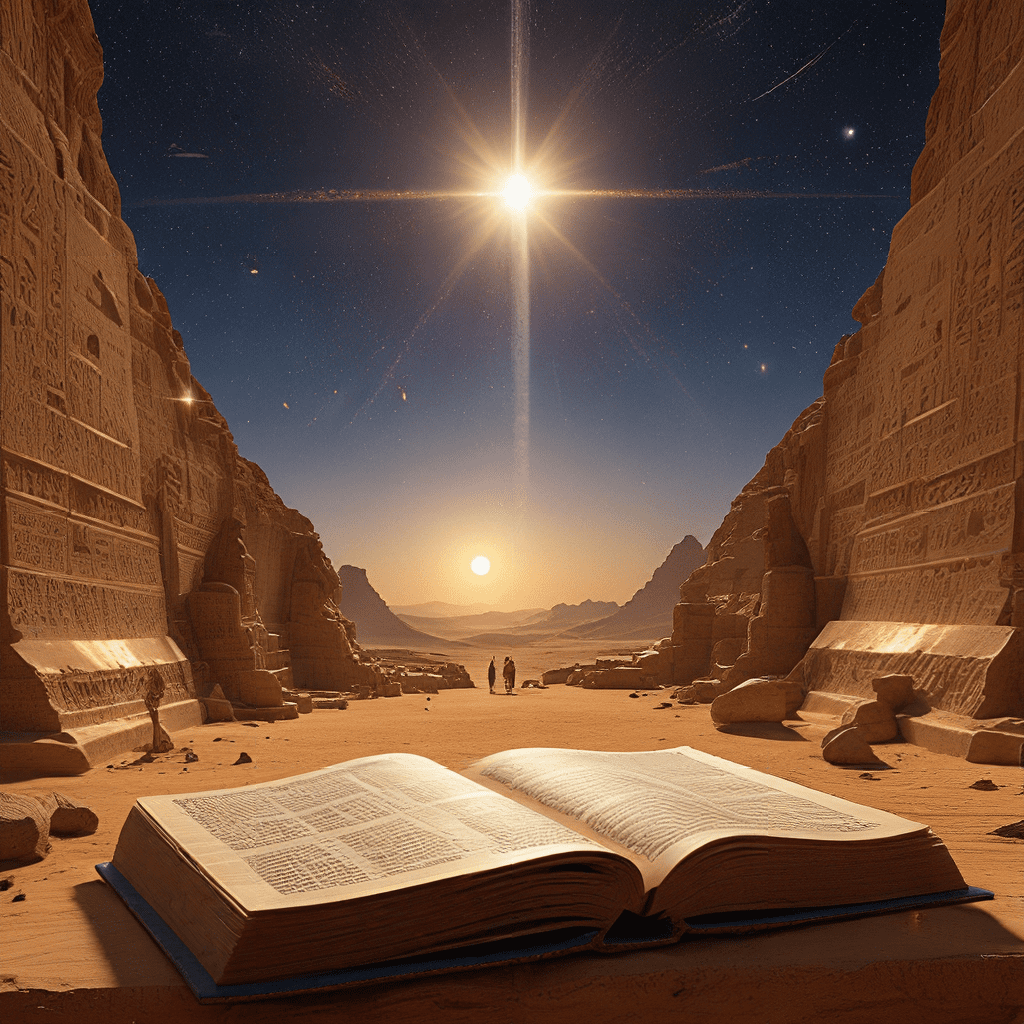The Book of the Stars: Introduction
Ancient Egypt, a civilization known for its magnificent pyramids, intricate hieroglyphs, and powerful pharaohs, held a deep fascination with the stars. The Egyptians believed that the celestial bodies held the key to understanding the universe, guiding their lives, and shaping their beliefs. This article delves into the rich tapestry of Egyptian astronomy, exploring their celestial observations, star gods, and the profound impact of the stars on their culture and religion.
Ancient Egypt’s Celestial Obsession
For millennia, the Egyptians meticulously studied the night sky, charting the movements of stars, planets, and constellations. Their observations were not merely a scientific pursuit, but an integral part of their worldview. They believed that the stars held divine power, influencing everything from the seasons and the Nile River’s floods to the fates of individuals and the pharaohs themselves. The Egyptians used their understanding of astronomy to create a precise calendar, plan agricultural activities, and even navigate the Nile River.
The Egyptian Zodiac: A Celestial Map
The Egyptians developed their own unique zodiac, a celestial map divided into 36 decans, each representing a specific star or group of stars. These decans were linked to the 360 days of the Egyptian year. Each decan was associated with a specific god or goddess, representing different aspects of life, death, and the afterlife. The Egyptian zodiac was a complex system that guided the Egyptians’ understanding of the cosmos and their place within it. For example, the decan of Sirius, the brightest star in the night sky, held a significant role in Egyptian mythology.
Deciphering the Star Gods
The Egyptians saw the stars as divine beings, each with its own unique personality, powers, and influence on human affairs. These celestial deities played crucial roles in Egyptian mythology and religion. For example, the goddess Nut, the sky goddess, was depicted as a woman stretching out across the heavens, her body adorned with stars. The god Osiris, a crucial figure in Egyptian mythology, was associated with the constellation Orion, which rises in the east just before the annual flooding of the Nile River, a vital event for the Egyptians.
The Journey of the Sun God Ra
The sun god Ra, one of the most important deities in Egyptian mythology, played a central role in their understanding of the cosmos. Each day, Ra sailed across the sky in his solar boat, bringing light and life to the world. At night, he journeyed through the underworld, battling the forces of darkness and chaos. The Egyptians believed that the stars were Ra’s entourage, accompanying him on his celestial journey. The rising and setting of the sun and stars marked the transitions between day and night, life and death, and order and chaos.
The Significance of Orion and Sirius
The constellations of Orion and Sirius held particular significance for the Egyptians. Orion, the hunter, was associated with the god Osiris, while Sirius, the brightest star in the sky, was connected to the goddess Isis, Osiris’s sister and wife. The heliacal rising of Sirius, its first appearance in the morning sky after a period of invisibility, coincided with the annual flooding of the Nile River. This event, a vital source of life and prosperity for the Egyptians, was seen as a divine blessing bestowed by the star goddess Isis.
The Role of the Stars in Egyptian Religion
The stars played a central role in Egyptian religious beliefs and practices. Temples were often aligned with specific stars or constellations, and rituals were performed to honor the celestial deities. The Egyptians believed that the stars guided the souls of the dead on their journey to the afterlife. The Book of the Dead, a collection of spells and hymns intended to aid the deceased in their journey, includes passages referencing the stars and their role in the afterlife.
The Book of the Dead and the Afterlife
The Book of the Dead, a collection of spells, prayers, and instructions for the deceased, highlights the importance of the stars in the Egyptian concept of the afterlife. The text describes the stars as portals to the celestial realm where the deceased would be judged and ultimately resurrected. The deceased would be guided by the stars, particularly the constellation of Orion, which was believed to be the gateway to the afterlife.
Astronomical Observations and Calendar Systems
The Egyptians’ fascination with the stars led to the development of advanced astronomical observation techniques. They meticulously tracked the movements of stars, planets, and the sun, using these observations to create a highly accurate calendar. The Egyptian calendar, based on a 365-day year, was divided into 12 months, each with 30 days, plus five extra days. This calendar system was crucial for organizing religious festivals, agricultural activities, and the administration of their society.
The Legacy of Egyptian Astronomy
The Egyptians’ love for the stars and their remarkable astronomical observations left a lasting legacy. Their knowledge influenced later civilizations, including the Greeks, who adopted many of the Egyptian star names and constellations. The Egyptians’ understanding of astronomy was remarkable for its accuracy, contributing significantly to the development of astronomy and calendar systems throughout the ancient world.




